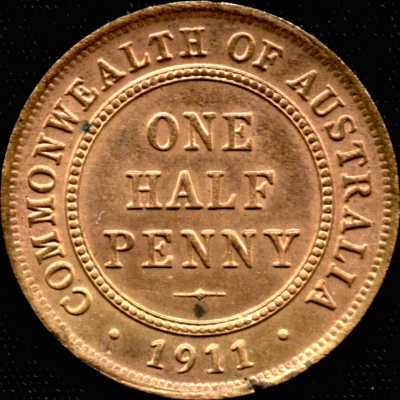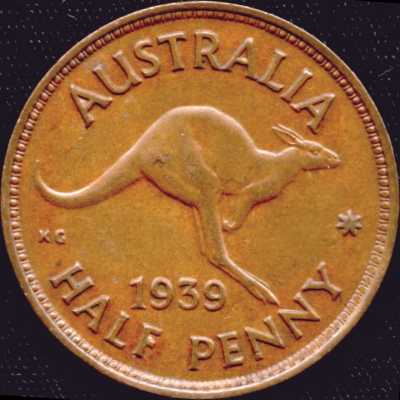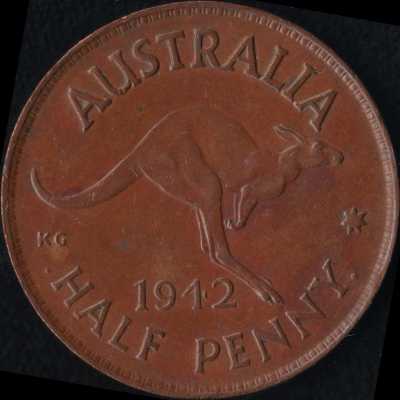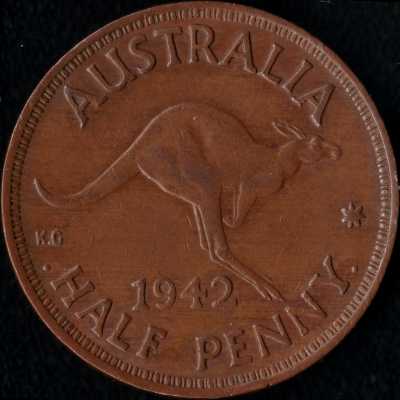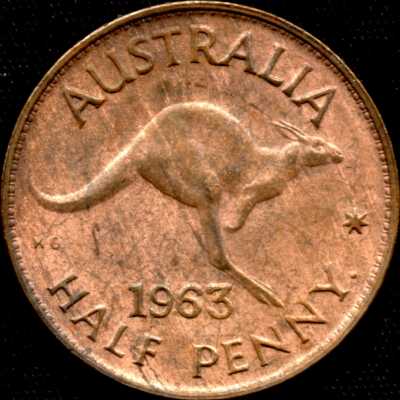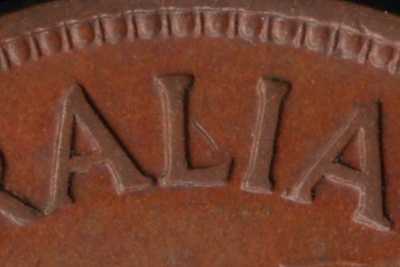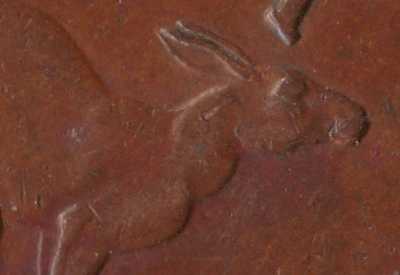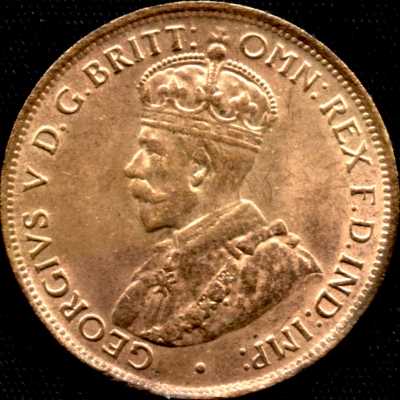
Designed by Bertram McKennal, this obverse was used on all halfpennies from 1911
to 1936 inclusive.
156 rim denticles.
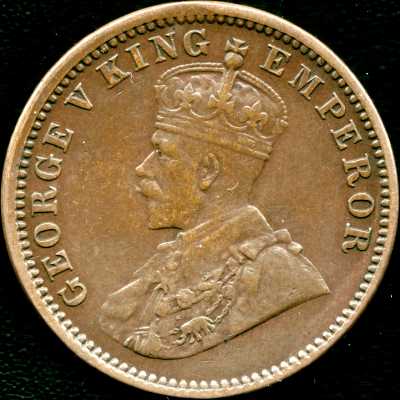
Indian quarter anna, used for a very small number of 1916 halfpennies.
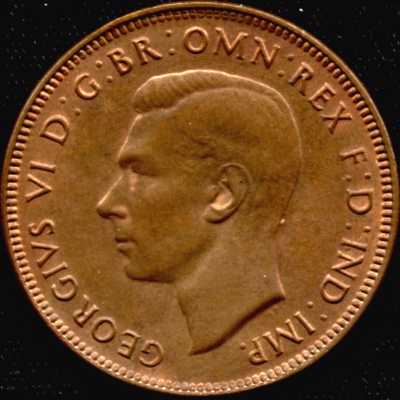
Designer was Thomas (Humphrey) Paget. This obverse was used for Australian halfpennies
from 1938 to 1948 and is identical to that used on British halfpennies 1937-1948.
147 rim denticles.
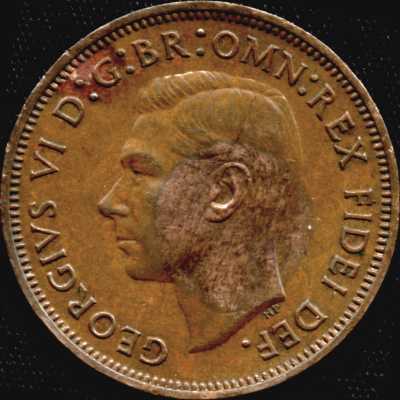
Legend was modified to remove IND IMP since India had become independent in 1947.
F D expanded to FIDEI DEF. Used for all halfpennies 1949-50, the London issue of
1951 and most of the Perth 1951 coins.
146 rim denticles. All the letters "I" are aligned with denticles.
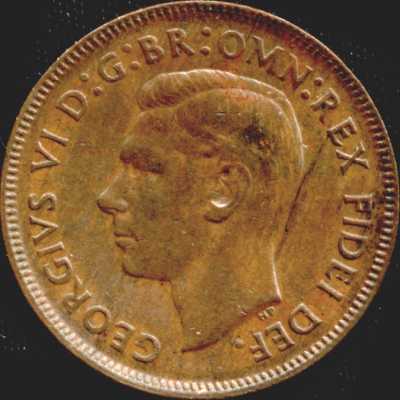
Very similar to obverse 4. Used for some of the 1951 Perth halfpennies and all
the 1952 coins.
149 rim denticles. The letters "I" in FIDEI are aligned with gaps between
denticles.
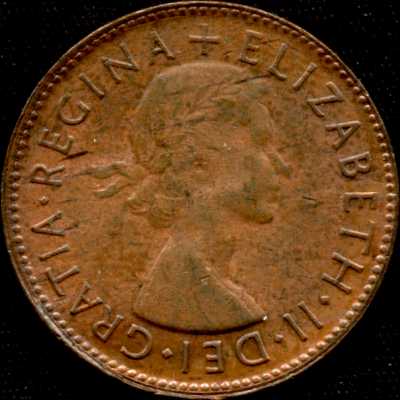
First of the obverses to show Mary Gillick's portrait of Elizabeth II. Used at
the Perth Mint for halfpennies dated 1953-55.
Rim embellishment comprises 112 round beads.
The omission of FD (Fidei Defensor) caused a bit of a stir akin to that which
followed the omission of DG (Dei Gratia) on the 1849 British "godless"
florin.
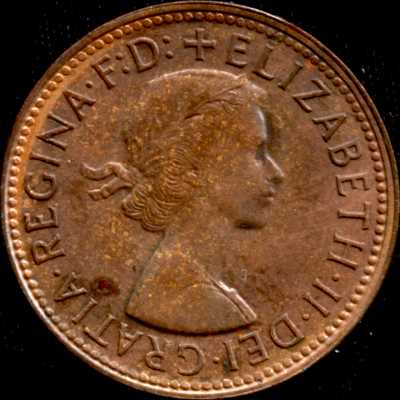
FD restored to legend. Used at Perth and Melbourne Mints for halfpennies dated
1956-64.
110 rim beads.
